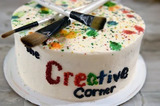
Identifying and describing parts of a circle and relationship between the parts - Mathematics Instructional Plan
- Subject:
- Mathematics
- Material Type:
- Lesson Plan
- Provider:
- VDOE
- Author:
- VDOE
- Date Added:
- 10/07/2024

Identifying and describing parts of a circle and relationship between the parts - Mathematics Instructional Plan

The student will complete a task where they are given 50 feet of fencing. They have to design the largest area of garden using all of the fencing. Students must explore circles, right triangles, and rectangles. Students will be using the formulas of area and perimeter and circumference to calculate perimeter and area. This task was created with Jamboard to allow students to collaborate together in person or remotely, in real time, as well as allowing the teacher to view students' work in progress. The initial slide presents the task and provides the formulas for each shape’s area and perimeter. The subsequent slides provide workspace for students’ thinking and collaboration. The last slide is a conclusion slide. Here students tell which shape they chose, give the measurements, and justification

Designing a Dog Park Task Template, Student Version of Task, Anchor Pages and Scoring Rationale

Going the Distance Mathematics Instructional Plan

Learn why artists have been featuring food as a subject in their work for centuries. You’ve been told to eat your vegetables, but have you ever tried to paint them? Special Guest Lisa McLaughlin, the baker behind Jesse’s Girl Cookies, invites us into her kitchen to experiment with modern art techniques on cakes, and then we’ll make our own painting of a scrumptious treat inspired by 20th-Century painter Wayne Thiebaud.

Just in Time Quick Check Circumference Practical Problems